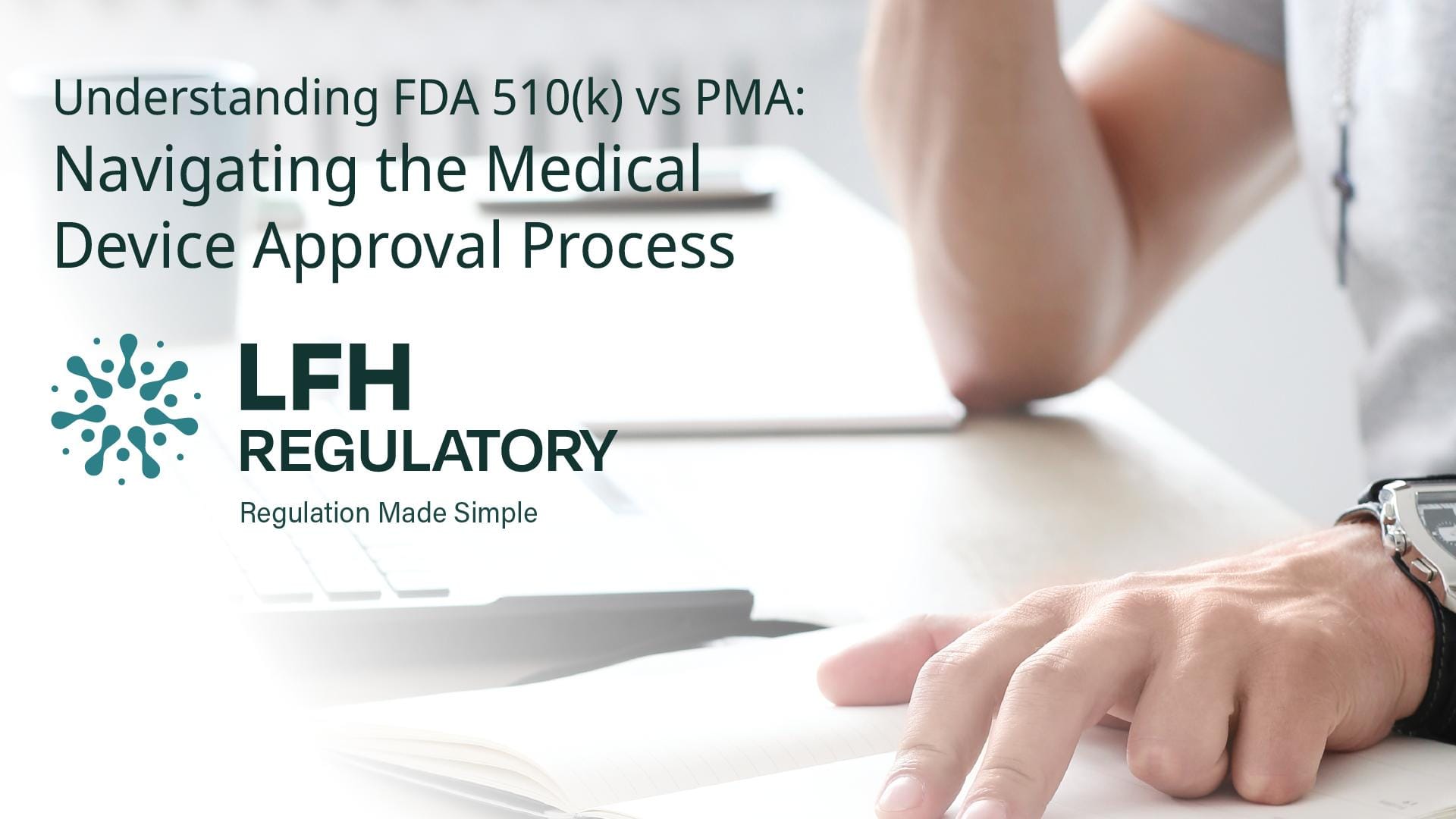FDA 510(k) vs. PMA: What’s the Difference?
If you’re preparing to bring a medical device to the U.S. market, understanding the differences between FDA 510(k) and Premarket Approval (PMA) is critical. These two regulatory pathways serve different device classes, timelines, and evidence requirements. In short:
- 510(k) is faster, less expensive, and suited to moderate-risk devices with existing predicates.
- PMA is a longer, more rigorous process for high-risk, novel technologies requiring clinical trials.
What Is FDA 510(k)?
The FDA 510(k) process (named after Section 510(k) of the Food, Drug, and Cosmetic Act) is a premarket submission used to demonstrate that your device is substantially equivalent to a legally marketed device (predicate) not subject to PMA.
Key Features of 510(k):
- Substantial Equivalence: Must prove your device is as safe and effective as an existing product.
- Review Time: Average review time is ~90 days, depending on complexity.
- Lower Cost: Significantly less expensive than PMA — ideal for startups.
- Testing Requirements: Bench testing, biocompatibility, and sometimes clinical data are needed.
Advantages:
- Quicker market access
- Lower regulatory burden
- Suitable for incremental innovations
Challenges:
- Must prove substantial equivalence
- Cannot be used for high-risk or novel devices
What Is PMA?
Premarket Approval (PMA) is the FDA’s most stringent approval process. It’s mandatory for Class III devices — those that sustain life, are implanted, or pose significant risk.
Key Features of PMA:
- Scientific Evidence: Requires robust clinical trial data and technical documentation.
- Longer Review Time: Several months to years, depending on submission quality and device type.
- Higher Cost: Involves significant investment in testing, documentation, and post-market obligations.
- Post-Approval Monitoring: Strong focus on long-term safety and real-world performance.
Advantages:
- Offers strong regulatory credibility
- Validates novel, life-saving innovations
Challenges:
- Time-consuming and expensive
- Requires strategic planning and clinical study design
Comparison Table: FDA 510(k) vs. PMA
| Criteria | FDA 510(k) | PMA |
| Device Class | Class I & II | Class III |
| Review Time | ~90 days | Months to years |
| Cost | Lower | Significantly higher |
| Data Requirements | Bench/biocompatibility tests | Full preclinical + clinical trials |
| Post-Market Burden | Minimal | Intensive surveillance |
Which FDA Regulatory Pathway Should You Choose?
The decision depends on:
- 📌 Device Risk Classification
- 📌 Existence of Predicate Devices
- 📌 Level of Innovation
510(k) is ideal for devices that are improvements of existing technology. If your device is novel, high-risk, or without precedent, PMA is likely required.
Regulatory Strategy Tips
Taking a strategic approach early can reduce costs and delays:
Engage Early with Regulatory Experts
Map out the right regulatory path from the start to avoid surprises.
Schedule a Q-Sub Meeting with the FDA
Seek feedback on your pathway, clinical study design, or testing plans.
Invest in Your Quality Management System (QMS)
A strong QMS is a core requirement for both pathways, especially PMA.
Learn how to build a compliant system:
👉 Guide to Creating a Quality Manual
👉 Benefits of Using ISO 13485 QMS
Plan Clinical Trials Early
For PMA devices, a successful approval depends on well-designed, GCP-compliant studies.
Implement Post-Market Surveillance
Use tools like risk management plans and CAPA systems to stay compliant after launch.
Need Help Navigating 510(k) or PMA?
Whether you’re preparing an FDA presubmission, 510(k), or PMA, our consultants can help you every step of the way — from regulatory strategy and clinical planning to quality and compliance.📞 Call us: +44 1484 662575
📧 Email: info@lfhregulatory.co.uk
💬 Or Get in Contact to find out how we can help.
FAQ’s for FDA 510(k) and PMA
What is the main difference between FDA 510(k) and PMA?
510(k) is a faster, less costly process for moderate-risk devices that can show substantial equivalence to an existing product. PMA is a more rigorous, time-intensive pathway required for high-risk or novel devices.
How long does the FDA 510(k) process take?
On average, the FDA 510(k) review takes about 90 days, though more complex submissions can take longer.
What devices require FDA Premarket Approval (PMA)?
Class III devices, those that sustain or support life, are implanted, or pose significant risk — must go through the PMA process.
Is 510(k) always the best option for faster market access?
Not always. While 510(k) is quicker and less expensive, it only applies if a suitable predicate device exists. Novel or high-risk technologies will require PMA.
What type of evidence is needed for PMA approval?
PMA requires extensive preclinical and clinical trial data, along with detailed technical documentation, to demonstrate safety and effectiveness
Can regulatory experts help with choosing between 510(k) and PMA?
Yes. Engaging with regulatory consultants early helps you determine the right pathway, prepare clinical study designs, and avoid costly delays.
- Laura Friedl-Hirsthttps://lfhregulatory.co.uk/author/laura/
- Laura Friedl-Hirsthttps://lfhregulatory.co.uk/author/laura/
- Laura Friedl-Hirsthttps://lfhregulatory.co.uk/author/laura/
- Laura Friedl-Hirsthttps://lfhregulatory.co.uk/author/laura/



